
You are reading the older HTML site
Positive Feedback ISSUE
may/june 2008
eastern electric
M-156 amplifiers
as reviewed by John Potis
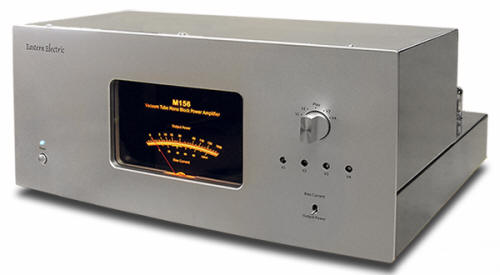
|
Eastern Electric made its entry into the market by designing and manufacturing the popular MiniMax series of components that featured mini chassis and mini power ratings. They started with the $1099 MiniMax preamplifier, then followed up with the same-priced 8-watt MiniMax tube amplifier using the 6BM8 output tube, soon trailed by the $950 remote-controlled MiniMax integrated amp with the same tubes and output power. Then came the more conventionally sized and powered $1799 Eastern Electric M520 integrated EL-34 24-wpc remote-controlled integrated based on the classic Mullard circuit whose name it bears. But when Alex Yeung, Eastern Electric's Hong Kong-based designer, meant to go for broke and build his most powerful Eastern Electric amplifier yet, he vacillated between his two favorite power pentodes, the Siemens F2A11 and the Telefunken EL-156.
The EL-156 was developed specifically for audio and at the time was used to amplify the tiny signals used in cutting lacquers for mastering of LPs. The Telefunken EL-156 was a 10-pin tube that, I'm told, was extremely linear and accurate (hence its use in mastering) but of limited utility because most available tube sockets are octals—they only support 8 pins. You just can't fit a 10-pin tube into an 8-hole socket. Telefunken gave up production of this great tube in the 70s and somewhere along the line, all the tooling for the tube's manufacture ended up in China. There's a real chance, in fact, that the last of the EL-156 tubes under the Telefunken brand were actually made in China.
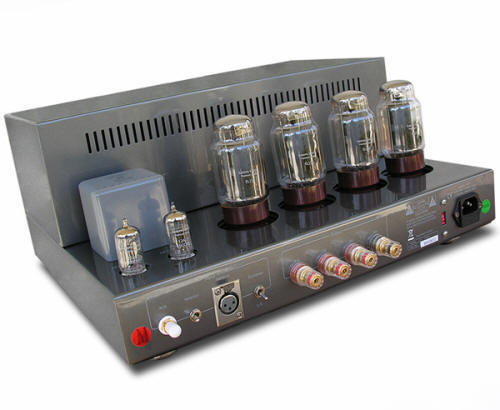
When Yeung discovered that Shuguang had relaunched EL-156 production as an 8-pin tube to render appropriate hardware sourcing a non-issue, his dream of the all-out amplifier coalesced around the M156. After about 1.5 years of design and refinement, the M156 monos were born. As far as Yeung knows, these are the first EL156 audio power amps ever made. They develop a massive 160 watts with a frequency response of 15Hz to 35kHz (+/- 3dB), an input sensitivity of 1V, a S/N ratio of 85dB and high gain of 30dB. The M156 amplifiers weigh 54lbs each and measure 16¾" wide by 16" deep and 8" high. In no way, shape or form is there anything mini about these. Each amp ships with four Eastern Electric-branded EL-156s and a pair of 12AU7s—installed. Unpacking the amplifiers couldn't have been easier but I advise caution when reaching around back where the 12AU7s are. They're installed close to the rear corner. Careless handling such as jamming the back of the amp into your belly to walk it around could result in a broken tube. It's not a big worry though. UPS was kind enough to deliver one amp in a badly water-soaked outer carton. Being double-boxed, the inner box proved fine. Ditto for the protective foam cradles inside, but I did have to dig into the box from the bottom, with the amplifier sitting upside down. Even fumbling around blinded to the layout of the inverted amplifier, I retrieved the amp in perfect condition.
Astute readers have doubtless already noticed the dual-use frontal VU meters. Not only do they track output voltage, they are also used to bias the pentodes. The knob on the front panel selects either power monitoring (its 12:00 position) or four other positions, each of which is dedicated to one output tube. Using the meter needle's deflection, you'll turn the corresponding setscrew beneath the selector knob with a suitable screwdriver until it reads 40mA. Plan on spending between 60 and 90 seconds biasing each amplifier. Eastern Electric advises to check the bias on your new amp but that it won't require additional adjustments until you replace tubes. Still, it's so easy to check for bias drift that you'll probably want to do it periodically just for the hell of it—it can't hurt. Eastern Electric partner and US importer Bill O'Connell of Morningstar Audio tells me that the amps can be completely retubed for about $200. Since the amps are manually biased (which is called fixed bias, believe it or not), replacement pentodes can be purchased individually. No matched quartets are required.

Some folks hate power meters. I admit to quite liking them and I find them quite useful. Those on the M156 amplifiers glow a beautiful amber that doesn't get too bright with the room lights dimmed. Aside from the meters and bias controls, the only other front panel accoutrements are the velvety smooth power switch and its soft blue pilot light. Around back are the tubes and an apron bursting with connectivity options. The M150s feature both RCA and XLR inputs with a selector toggle between them. Another toggle selects between US or EU wiring configuration for the balanced input. Then follow four shrouded WBT-type binding posts at 0, 4, 8, and 16 Ohms. Finally, there are the voltage selection switch (230V/115V) and fused IEC power inlet.
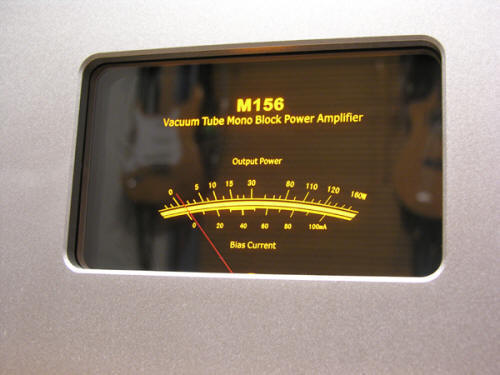
Build quality is very good. The amps are solidly put together but not accessorized to jewel-like status like mega-buck amps—which is fine by me. They remain quite handsome. At its thickest center, the brushed aluminum faceplate is .5 inches thick, tapering back to about .25 inches at both sides. The faceplate does not exceed the width of the chassis proper, which is finished with a nicely applied glossy grey metallic lacquer. All connective hardware looks and feels solid.
With regard to the balanced inputs, I asked designer Alex Yeung if the Amplifiers were fully balanced. He told me that to achieve fully balanced operation the amplifier would require double the amount of tubes. Instead, he uses a Permalloy-core input transformer as a phase splitter. Those familiar with the MiniMax phono stage may recall its excellent performance with low-output moving coil cartridges, which has been very widely praised. This is largely due to its expensive Permalloy step-up transformer. With the M156, a similar transformer is used to match impedance and create the anti-phase signal necessary for a push/pull circuit without the added expense and complexity of extra tubes. I then asked Yeung if the M156 incorporated any new twists or tricks. He told me no, that it was a straightforward, tried and true design where most of the development time had been spent refining it.
My review samples use the premium Mundorf Silver & Oil caps, which command a $700 surcharge for the pair beyond the reasonable $5000 stock sticker.
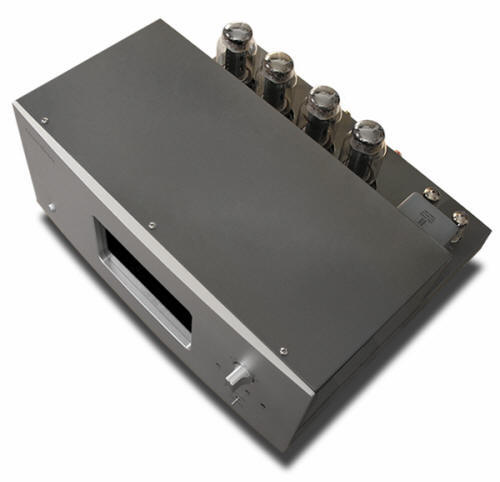
Morningstar's Bill O'Connell describes the EL-156 as a highly refined cousin of the KT88. Based on what I hear, he's correct. Right out of the box, the M156 amplifiers sound fully extended at both frequency extremes. They were also a little forward and slightly aggressive but that faded completely after less than 50 hours at which time the amplifiers sounded as linear as any tube amplifier I've ever heard and in that regard, they were reminiscent of a quality solid-state amplifier.
I've found that one of my joys in life is when I share with fellow PFO scribe, Chip Stern, my feelings that the KT88 tube is the tube for solid-state lovers. Sometimes it's a real riot to hear him gasp and gnash his teeth at such heresy. And each time I say it to him it's as though it's the first time I did. So when I continue and explain to him that this is not a slight on the KT88, but actually a compliment, I can start to hear him cease sweating over the phone. What I'm trying to say is that the KT88—and now its kissing cousin, the EL-156 tubes, are two extremely linear sounding tubes. They both produce extremely solid bass foundations for the music as they stand in stark contrast to many other tubes that can't match these in terms of both extension and solidity. Up top through the treble there's nary a sigh of euphonic roll-off or artificial sweetness. In other words, there are no euphonic colorations to turn off solid-state aficionados looking for the truth, the whole truth and nothing but the truth.
In every way that I can think of, the M-156 does remind me of a very good KT88 tube amplifier. But that's not to say that it sounds like solid-state. I certainly never said that. What I'm trying to get across is that the M-156 won't turn off solid-state listeners with softness at either frequency extreme or any colorations throughout the midrange either but it most certainly sounds like a tube amplifier. In terms of solidity of presentation, tonal saturation and a complete absence of hardness or sterility, the M-156's signature is all tube.
I've been using the Eastern Electric M-156 amplifiers for several months now and stable-mates have included my own Tidal Pianos as well as the Genesis Advanced Technologies G7.1p, the Thiel SCS4 and the Triangle Trio monitors and as far down as any of these go in the bass, the M156 keeps it nice and taut, with as much power and control as you'd reasonably hope for from a premium 160-watt tube amplifier.
I wouldn't want to give the impression that the M-156 doesn't do small in intimate, but with so many watts on tap I've found myself gravitating toward big music—music with gravitas and a grand authority. Large scale classical, big band, rock, and stuff like that.
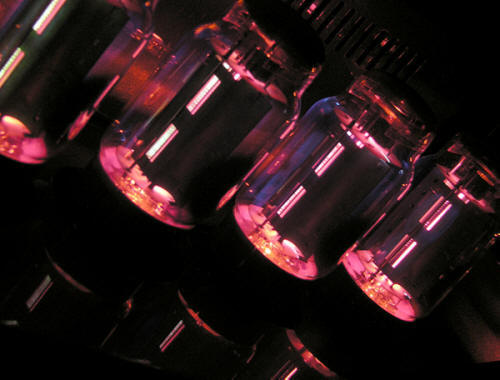
No matter the speakers involved, the M-156 monos never failed to create a big soundstage with plenty of space and an excellent sense of depth—something not always easy to do in my modest room. But dimensionality is one of the things these M-156s do very well. They're very transparent and colorless amplifiers that offer a clear window on the instruments as well as to the surrounding space.
An amplifier as solid and controlled in the bass and this extended through the treble will likely resolve dynamics, too, as long as there are no problems in the midrange. The M-156 amps do indeed sound fast and with such power on tap, they perform well, dynamically speaking, at most any volume range. The Tidal Piano speakers are of relatively low sensitivity but they are such an easy load that I can enjoy them (and frequently do) with my 26-watt Canary CA-330 300B push-pull amplifiers. But there's no mistaking their increased fluidity and rhythmic fun factor once tethered to the M-156 amplifiers. The speakers perform with a new freedom and abandon that is both exciting and addictive. The bigger the musical production the harder you'll fall for the M-156's musical prowess and their seemingly limitless power.
I suppose that there will always be exceptions, but in general I've found that some speakers sound best with pentodes and other's sound best with triodes. There are some speakers, my Hørning Perikles or the Lamhorn 1.8s (with AER drivers) for instance; that once you hear with a good triode you'd never consider going back to a pentode. Sonically I'd suggest that the results are akin to putting diesel into a gasoline engine, as timbres can get thick and syrupy without the inner illumination that SET amplifiers are known for. Conversely, there are some speakers that require a weighty pentode for body, power and control, and to flesh them out tonally. I find the M-156 the type of amplifier that, while most at home with the latter category of speaker, doesn't sound out of place in the former. I've run these amplifiers with my own 96-dB efficient Hørnings and in terms of power they were complete over-kill and thusly they wouldn't be my first choice. But they didn't sound at all bad either. Credit the M-156's linearity and uncolored transparency for not working against the Lowther-based Hørning's extreme speed, clarity and transparency.
Into conventional speakers the M-156s retrieve all the musical detail that I asked them for and, again, it was their clean and transparent nature and that crystal clear window upon the performance that inspires the feeling that one is hearing everything there is to hear. But these are tube amps and though they sound crystal clean, there's no feeling of stark sterility. While there's no bass overhang and micro dynamics are as swift and articulated as you could ask for from such a powerful amplifier, nevertheless images and instrumentals are fully fleshed-out and believable.
The one and only area where the M-156s don't quite measure up to the best presentations I've heard in my room is in their ability to give instruments an almost physical presence in my room. I'm talking about a presence so tonally and visually saturated that you feel as though you can reach our and touch the musicians. The Canary CA-160 is a 140-watt EL34 mono amplifier ($8750/pr) that did. Interestingly, the other two amplifiers in my experience that excelled in this area were both solid-state—just decidedly atypical in their sound—and I refer to the Bel Canto e.One Reference 1000 monos ($3800/pr) and the Bryston 28B SST monos ($16,000/pr). The M-156s were no lightweights; don't get me wrong. And at no time was I bothered by this "deficiency" at all because while they didn't measure up to the very best, they came more than close enough. In fact, I'd still place the M-156s at the top of their class; falling just short of the very best I've heard.

In terms of treble performance, from the M-156s I heard glimpses of genius; absolute genius. And once you hear these glimpses of genius you start to listen for them and only then does it start to sink in how varied treble execution can be from disc to disc because once you know of what your system is capable, you also come to realize how rarely the source material holds up its end of the bargain. But that's not the M-156's fault. From them I've heard some of the best-illuminated, musically detailed, and dimensionally articulated treble that I've heard from my own speakers. It's in this area that I think; solid-state. In my experience it's difficult to find this kind of treble extension and articulation with tubes. Of course, the M-156s achieve this presentation with no solid-state downsides; no hardness, no grit, grain or glare. I can't think of an amplifier with a better overall treble presentation. I can't say for sure, but I wonder if a large amount of the credit here should go to the Permalloy step-up transformer I mentioned before. There's just a purity here that makes me think about the superiority of step-up transformers being used with low-output moving coil phono cartridges rather than another added stage of amplification. These Permalloy transformers are used in Eastern Electric's own MiniMax phono preamp in the MC section and I recall the same level of sophistication there, too. Coincidence? There's always that possibility but I tend to think not.
As I said earlier, I found the Eastern Electric M-156 amplifiers unusually adept at driving my Tidal Pianos through the big stuff. I pulled out discs I haven't listened to in years such as the Soundtrack of Jurassic Park [MCAD] for awesome tight and deep bass and pounding macro-dynamic swings. Reiner and the Chicago Symphony's Scheherazade [Living Stereo] demonstrated excellent dynamics on both the micro and macro level along with upper frequency finesse and lower frequency power. DMP's Big Band's Glen Miller Project [DMP] excelled at evidencing PRaT and wonderful portraits of varying textures of brass and woodwinds. Got Swing by Eric Kunzel and the Cincinnati Pops Orchestra [Telarc] is a collection of big-band standards that demonstrated most of the aforementioned attributes along with vivid and naturally presented vocals thrown in for good measure. Play ‘em loud; play ‘em often!
But the smaller stuff such as Belafonte At Carnegie Hall [Hybrid SACD] proved every bit as enjoyable and demonstrative of the M-156's virtues. The acoustic guitarists had an unusual level of physical presence in my room on "Darlin Cora" and I'm certain I've never heard a more intimate portrayal of Belafonte's voice, which came across with excellent clarity, uncolored transparency and emotive nuance. The M-156's proved surprisingly adroit at reproducing the exceptionally subtle and nuanced bass lines of the acoustic basses and by then I'd come to expect nothing less than the holographic soundstage and well-placed instruments on stage. Image delineation and focus was outstanding. The sense of the hall was first-rate as I felt as if I could jump out of my chair and navigate the stage with my eyes closed.
Conclusion
Those hating the thought of tubes, no matter how inexpensive to replace and no matter how simplified their maintenance procedure, probably won't have much interest in the Eastern Electric M-156 mono amplifiers. Pity, that. If you do like tubes but value a chocolaty midrange and a treble sweeter than honey or a presentation equally amber in hue you may not cotton to them, either. These monos are distinctly not about euphony. But if you value top-to-bottom linearity, transparency and superb coherence, you may want to give due consideration to these amps. Solid-state lovers with a healthy curiosity about modern tube amplifiers may find the M-156s right up their alley—it may seem like heresy to say so, but these amplifiers give a healthy dose of what the very best of solid-state amps can deliver. If that sounds crazy, consider that the very best examples of solid-state share much in common with the very best of tube designs. And these are very good examples of neutral and powerful tube amps that should be able to drive most any speaker out there—certainly any that I can think of. At their price, they're not cheap, but they pack a lot of value and performance into their solidly built chassis. They're very well built; they have a grand presentation and tons of power for what I would call a very reasonable price. If any of this appeals to you, I haven't personally auditioned a more recommendable pair of amps with such universal appeal and I'm pleased to offer them my highest recommendation. John Potis
Eastern Electric M 150 mono amplifiers
Retail: $5000/pr; $5700 as reviewed with Mundorf silver & oil caps
Eastern Electric
web address:
www.morningstaraudio.com/
